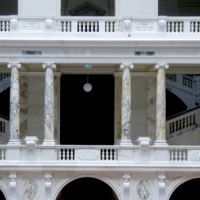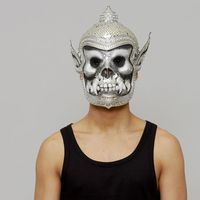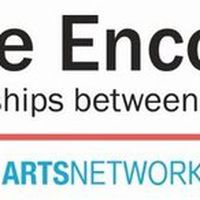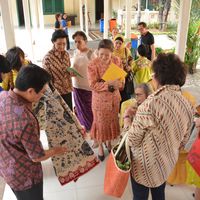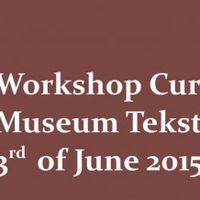Historical artifacts come alive with contemporary dance | Occupy the Museum | Austria

[caption id="attachment_35278" align="aligncenter" width="372"]
In connection with the ongoing cooperation between the Weltmuseum Wien and the Asia-Europe Foundation (ASEF), culture360.org interviews Dr. Sri Kuhnt-Saptodewo, curator of the Insular Southeast Asia Collection and of the special exhibition Danced Creation. Asia's Mythical Past and Living Present part of the event series Public Lab.
In this interview, Dr. Kuhnt-Saptodewo gives insight into the underpinnings of the exhibition and event series and their links with contemporary dance performance. She also shares her views on the nature of collaborative efforts and what it means to participate in the ASEF's Creative Encounters programme.
Could you share your idea behind the exhibition Danced Creation Asia’s Mythical Past and Living Present and the Public Laboratory dance event series? Also, elaborate on how you intend to liven up the museum by linking historical museum objects with contemporary dance performance?
The exhibition Danced Creation. Asia’s Mythical Past and Living Present on the one hand introduces the public to the wide spectrum of historical Asian dance traditions, as traced by museum objects. On the other hand, it presents contemporary dance performances and installations which have their roots in these historical practices. In the course of preparation, six Asian artists, who represent Asian dance as a whole, have visited Vienna and chosen museum objects which were then presented in combination with their own artistic work.
In connection with the exhibition, from the 18th of July until August 4th 2013, the Public Laboratory event series - also titled Occupy the Museum - will take place, featuring Ong Keng Sen and Michael Stolhofer (ImPulsTanz) as curators. 14 choreographers will take part in the Public Laboratory. Themed lectures and public discussions will demonstrate the individual artists’ connection to selected museum objects and their experiences during the working process. Museum artefacts will therefore not merely be presented in a traditional exhibition environment, but will be contextualised in individual ways. The public discussions will allow for in-depth reflection on both the historical and present meaning of the objects.
Therefore, the outstanding characteristic of the exhibition and event series lies in the presentation of the lives and works of contemporary artists, in connection with historical artefacts from the museum collection. Our hope is that this interaction will create a distinct experience, highlighting the new orientation of the museum itself.
[caption id="attachment_35280" align="aligncenter" width="434"]
 Dr. Sri Kuhnt- Saptodewo with Hiah Park and Didik Nini Thowok[/caption]
Dr. Sri Kuhnt- Saptodewo with Hiah Park and Didik Nini Thowok[/caption]What are the challenges when working with different project partners including the Jakarta Institute of Arts, ImPulsTanz, one moderator and six co-curators from Asia and Europe?
The project involves a large amount of people, some in the coordination, others participating as artists. This calls for good organisation and, more importantly, good communication between the institutions and artists involved.
The selection of Asian choreographers was made with Maria Darmaningsih, Vice dean for International Cooperation at the Faculty of Performing Arts of the Jakarta Institute of Arts. Maria Darmaningsih is the Director of the Indonesian Dance Festival and an expert in contemporary Asian Dance - therefore an ideal partner for a project surrounding Asian Dance.
Unfortunately, we do not have extra staff dealing solely with this project, so time management has been demanding. Generally, the collaboration has run smoothly.
Finding sponsors for the project has been most challenging. There has been a lot of artistic input, but realization with a relatively small budget is no easy task. Luckily, ImPulsTanz is renowned in Austria, therefore companies and institutions have shown interest in supporting the project.
Allowing artists to take over empty rooms in the museum has also been challenging for museum staff, as these rooms have been unused for many years. As unique as the historical rooms are, they require preparation. As an example, glass in the show cases was removed so the artists could use them for their installations.
Next week, the artists begin their residency with Ong Keng Sen and Michael Stolhofer. We hope everything will run smoothly over the next few weeks, working up to the public performances at the beginning of August.
[caption id="attachment_35281" align="aligncenter" width="434"]
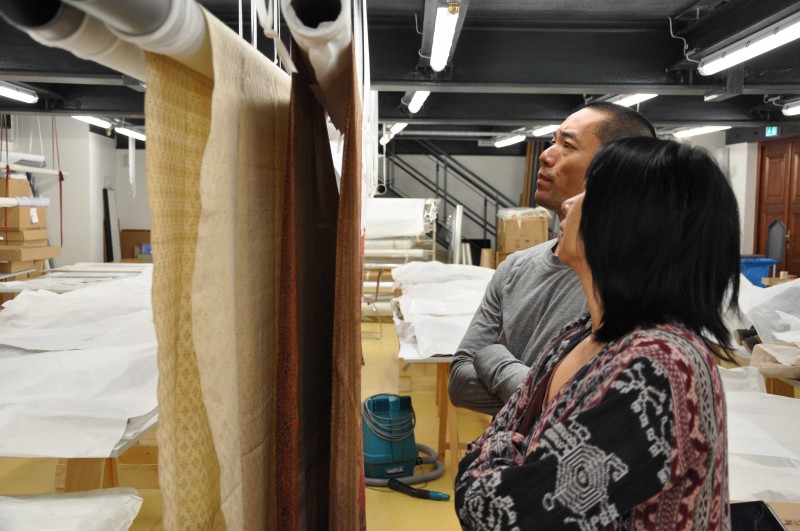 Dr. Sri Kuhnt- Saptodewo with coreographer Pichet Klunchun[/caption]
Dr. Sri Kuhnt- Saptodewo with coreographer Pichet Klunchun[/caption]Please explain how the Creative Encounters programme will benefit the collaboration between the partners and the participants.
The funding from Creative Encounters has made the project possible in the first place. While the dimensions of the project have grown since first proposing the Public Laboratory, the core of the project has remained. Asian and European choreographers will share their experiences and views on working with historical artefacts from one of the biggest ethnological museum collections in the world. The performances and installations will present cross-cultural perspectives, enabling an exchange with a Western public. An entire room of the exhibition Danced Creation is dedicated to the theme of cross-culture.
In giving contemporary European choreographers an opportunity to develop new performances using historical dance artefacts from Asia, a tradition of exchange between the West and the East is continued.
Do you have useful tips and recommendations to share with other organisations who want to apply to the Creative Encounters programme?
The most important thing is a good concept. This will hopefully lead to sponsors, which are generally required in addition to the Creative Encounters funding. A solid budget plan will prevent stress later on. Sufficient funding will also allow you to employ staff solely dedicated to the project. Realising a large-scale project and dealing with associated paperwork, funding and coordination takes up a lot of your time budget. Do not forget to take this into account!
Sri Kuhnt-Saptodewo, Dr., was born in Jakarta. She studied ethnology at the Ludwig-Maximilian-University in Munich. In 2003, with her habilitation Getanzte Geschichte. Tanz, Religion und Geschichte auf Java at the Humboldt-University in Berlin, she qualified for university teaching (venia legendi) in Southeast Asian studies. Since 2005 she has been Head of the Insular Southeast Asia Collection, Weltmuseum Wien.
Similar content
By Kerrine Goh
12 Sep 2013
from - to
17 Apr 2013 - 30 Sep 2013
posted on
21 Nov 2012
25 Jun 2015
from - to
03 Jun 2015 - 03 Jun 2015
from - to
16 Apr 2011 - 08 Jan 2012

